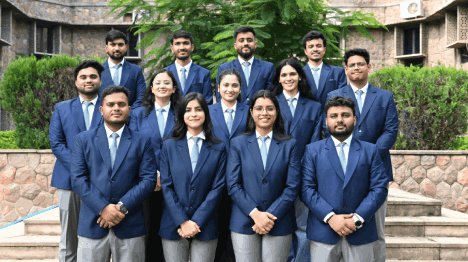- About Us
- Academics
Schools
Programs
General Information
- Faculty
The faculty members and researchers working at IIHMR University come from varied backgrounds including, but not limited to medicine, public health, management, economics, statistics, demography, human geography, social and behavioral sciences, rural development and pharmaceuticals.
- Admissions
- Research
.Publications & Journal
- Executive Education
Executive Programmes
- Online Certification Courses
ONLINE CERTIFICATION Courses
- Training
- Placements
- Fee Payment
- NAAC
- IQAC
- NIRF
- Webinars
- About Us
- About IIHMR University
- Board of Management
- Academic Council
- Board of Studies
- Research Board
- Institutional Review Board
- Finance & Audit Committee
- Departmental Research Committee
- Chairperson's Message
- President's Message
- IIHMR University Act
- Infrastructure
- Collaboration
- Ranking
- Board of Studies (School of Digital Health)
- Awards & Accolades
- Academics
- Institute of Health Management Research
- School of Pharmaceutical Management
- School of Development Studies
- School of Digital Health
- SD Gupta School of Public Health
- MBA (Hospital and Health Management)
- MBA (Pharmaceutical Management)
- MBA (Development Management)
- MBA (Healthcare Analytics)
- Master of Public Health
- Student Manual – Cohort 9 (2021-2023)
- Master of Public Health (Cooperative programme with Johns Hopkins University)
- Ph. D.
- MBA CSR & ESG Management (Executive)
- MBA Sustainable Business Management (Executive)
- Common Information for all the Programs
- Academic Calendar
- Student Handbook 2020-21
- Committees
- Policies
- Annual Exam Calendar
- Library
- Faculty
- Officers of University
- Dean of Institute of Health Management Research
- Dean of School of Pharmaceutical Management
- Dean of School of Development Studies
- Dean of SD Gupta School of Public Health
- Dean of School of Digital Health
- School of Digital Health
- Faculty List A to Z
- Faculty List Designation Wise
- Faculty List School Wise
- Admissions
- Research
- Executive Education
- Training
- Placements
- Alumni
- Events
- Job Openings
- Contact
- Research
End-line Evaluation for Diabetes Prevention and Control in Jodhpur District, Rajasthan
Agency : Humana People to People in India (HPPI)
The end-line evaluation for Diabetes prevention and control was carried out with the objectives (i) to evaluate the status of the target population under the project areas, (ii) to measure the degree of changes on KAP on Diabetes Community Care and Support project among the target community before and after the implementation of the project and (iii) to document good practices and success stories of the project for up scaling the project activities in other areas in near future.
The End-line evaluation study was adopted both the quantitative as well as qualitative techniques to develop the measurable indicators to verify the changes under the project. The sample frame for the evaluation survey was developed based on the number of village covered under the project. The structured questionnaires were used for household level survey and checklist for In-depth interview. For qualitative aspects, Focus Group Discussions (FGDs) at community level were organized separately for men and women. In depth interviews were carried out for the frontline health workers (ANM& ASHA), knowledgeable/PRI members of the community, project staff/field workers of HPPI and NPCDCS staff (specially looking after the Diabetes) along with District level health officials, MoIC of Mandor block of Jodhpur District.
The survey showed an increase in awareness of diabetes as compared to the base line data. At the time of base line 24 percent people were aware which has increased to 96 percent. It showed excellent contribution of the project to create awareness among the community about the disease. The knowledge of risk factors of diabetes also showed a change from 13 percent to 59 percent. This change could be associated to the severe awareness campaign in schools, in the community and use of wall writings, nukad nataks, which was one of the most efficient strategies adopted by the organization, and IPC through task force going door to door spreading awareness about the disease. Almost three fourth of the community members were influenced by the organization’s efforts as revealed by the study. Nearly 87 percent people went for blood test after the intervention under the project. The major contribution by the organization can be seen in the fact large number of persons having blood sugar more than normal value (hyperglycemia) had stopped taking anti diabetic oral medicines and have controlled it with exercise and dietary measures promoted under the project.



